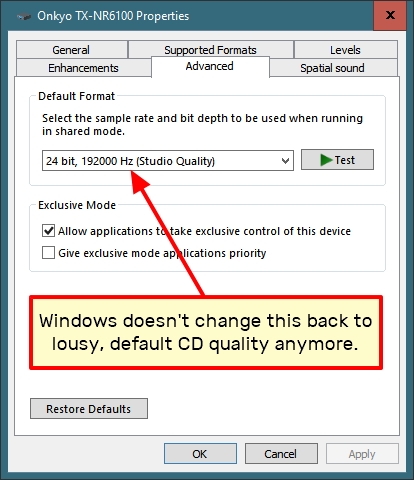For years I’ve had a desktop pc (currently running Windows 10, 22H2) connected to a Samsung TV (set up as a duplicate display) via an HDMI cable, and have never had a problem watching and hearing saved video files using VLC media player. Now there is a problem, perhaps since the April Windows update. The video continues to be excellent, but there is now no audio output from the speakers connected to the receiver connected to the TV. When I view the window below on the computer screen while the video is playing, I can see evidence of audio signal sent.
When I reboot the computer with Samsung selected as the Playback Device, the “bootup tone” plays normally at the TV/audio receiver.
Other observations:
1) I installed a driver downloaded from Realtek. Had audio as usual from pc speakers, but still no audio from Samsung.
2) Watched an mp4 video last night and used a separate bluetooth speaker for audio.
3) Tried other video players than that usually used with the same result.
4) Sometimes (but not always) video plays in a jerky slow motion in addition to playing no sound.
5) I connected a laptop to the same HDMI port used for the desktop pc connection to the TV via a different HDMI cable and had both video and audio. Unfortunately, I do not have another HDMI cable that is sufficiently long to try in place of the current one. I plan to get a replacement for it unless those more knowledgeable than me recognize another cause of the problem from the information provided.
I’ll be grateful for any guidance on finding a solution to the problem.
Steve









